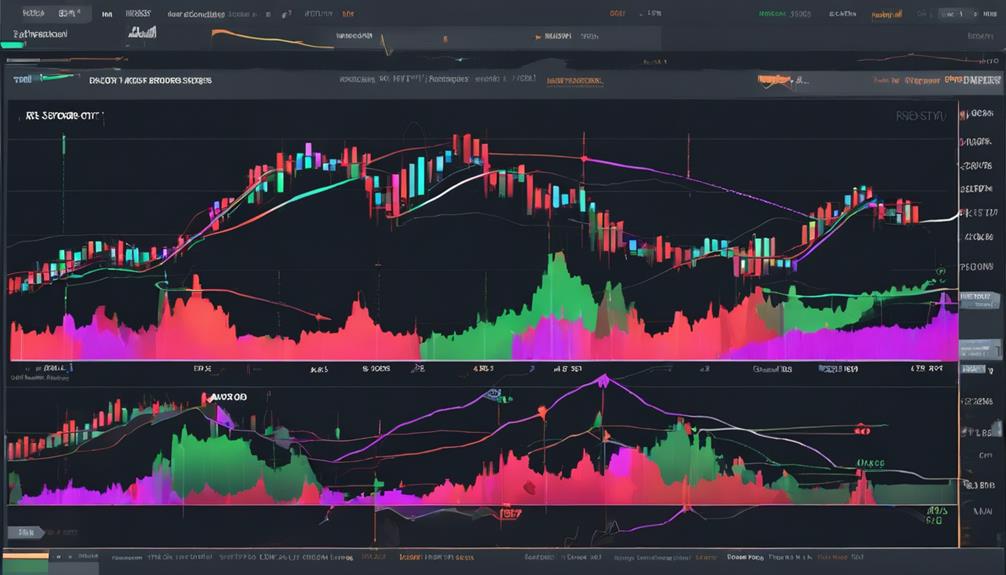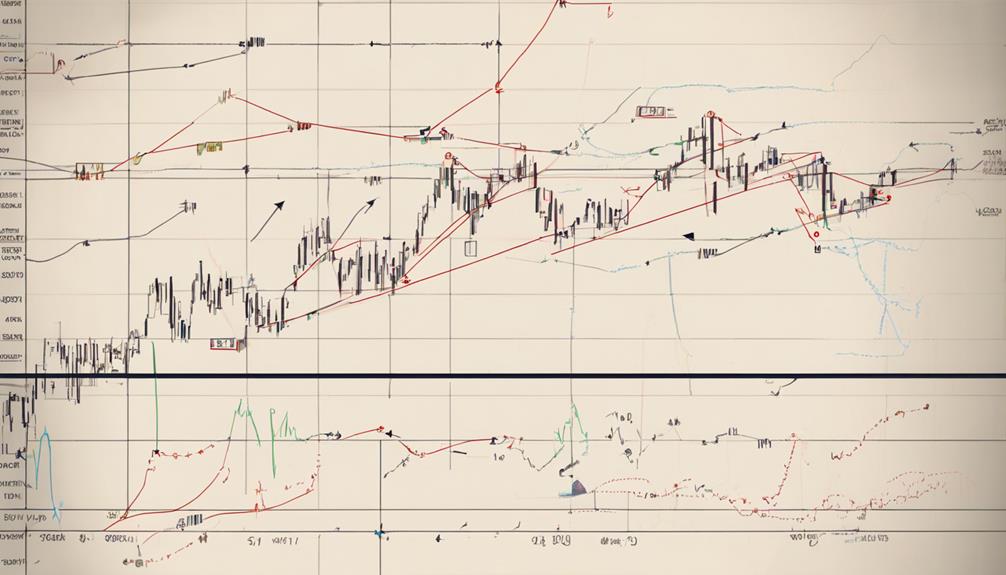So, you've probably heard about RSI and its role in swing trading, but have you truly grasped its potential impact on your trading decisions?
By incorporating RSI into your strategy, you can unlock valuable insights that may just be the key to maximizing your profits.
But before you dive in, let's explore why utilizing RSI for effective swing trading could be a game-changer for your investment journey.
Advantages of Using RSI in Swing Trading
Using the Relative Strength Index (RSI) in swing trading offers you a range of advantages that contribute to informed decision-making and effective strategy implementation. RSI, a versatile indicator, provides clear signals for overbought and oversold conditions, aiding in determining entry and exit points for swing traders. Its beginner-friendly nature and customizable features suit individual trading styles, while its applicability across various markets and time frames makes it widely used.
Moreover, RSI can be utilized alone or alongside other indicators to enhance trading decisions, offering flexibility in strategy development. Accessible on common trading platforms, RSI's straightforward signals empower traders by simplifying the identification of potential trading opportunities, making it a valuable tool in the arsenal of RSI Trading Strategies.
Disadvantages of RSI in Swing Trading

RSI in swing trading presents drawbacks that stem from its nature as a lagging indicator, reflecting past price movements rather than forecasting future ones. The potential for false signals with RSI can result in poor trading decisions if not used cautiously.
The indicator's simplistic nature may lead to limited accuracy in complex market conditions with multiple variables at play. Caution is advised when relying solely on RSI, especially without considering other indicators.
While RSI offers customizable settings for swing trading, its disadvantages lie in the risk of generating misleading signals and the possibility of making ill-informed trading choices. Traders should be mindful of these limitations when incorporating RSI into their swing trading strategies.
Implementing RSI for Swing Trading

When considering implementing RSI for swing trading, it's crucial to understand its role in identifying overbought and oversold conditions for strategic entry and exit points.
- Utilize RSI with a default setting of 14 periods on daily timeframes to capture price movements effectively.
- Adjust RSI threshold values based on market conditions to adapt to volatility levels.
- Combine RSI with other indicators to enhance trading decisions comprehensively.
- Employ RSI trendline methods and overlay different RSI periods for improved trading accuracy.
These strategies can help refine your approach to swing trading, providing a clearer path to making informed decisions based on market conditions and RSI signals.
RSI Strategies for Swing Trading

To optimize your swing trading strategy with RSI, incorporating tailored thresholds for overbought and oversold signals is essential for precise entry and exit points. In swing trading, RSI thresholds commonly used are above 70 for overbought conditions and below 30 for oversold conditions.
Customizing RSI parameters to align with your trading style can enhance effectiveness. Additionally, combining RSI with other indicators can boost the accuracy of your swing trading strategy. Divergences in RSI readings are valuable signals for potential trend reversals, providing important insights for swing traders.
How Does RSI Help in Managing Risks in Swing Trading?
Swing traders can minimize risks by implementing RSI indicator for effective trend analysis. RSI helps in identifying overbought and oversold conditions, indicating potential reversals. By using RSI in swing trading strategies, traders can make informed decisions and manage risks more efficiently.
Enhancing Swing Trading With RSI

Enhancing swing trading efficiency can be achieved by strategically adjusting threshold values for overbought and oversold conditions when utilizing the Relative Strength Index (RSI). By customizing RSI settings, swing traders can fine-tune their entry and exit points to better suit market dynamics.
Additionally, recognizing RSI divergence can signal potential trend reversals, offering valuable insights for decision-making. Combining the RSI indicator with other technical tools can further enhance the effectiveness of swing trading strategies.
This strategic approach empowers traders to adapt to changing market conditions, leading to more informed and successful trading outcomes.
Frequently Asked Questions
Is RSI Good for Swing Trading?
RSI is beneficial for swing trading if used correctly. It helps identify overbought and oversold conditions, guiding entry and exit points. Customize RSI settings to match your trading style. Combine RSI with other indicators for enhanced strategies.
Which Indicator Is Best for Swing Trading?
For swing trading, the best indicator is the Relative Strength Index (RSI). It excels in pinpointing optimal entry and exit points by gauging overbought and oversold conditions accurately. RSI's adaptability and simplicity make it a top choice.
Do Professional Traders Use Rsi?
You wonder if professional traders use RSI. They do. RSI guides them in spotting market extremes, timing trades, and refining strategies. Its simplicity and accuracy make it a go-to tool for seasoned traders.
How Do You Use MACD and RSI in Swing Trading?
To use MACD and RSI effectively in swing trading, analyze crossovers for momentum and RSI levels for strength. When MACD confirms RSI signals, consider potential buy or sell opportunities. Combining these indicators can improve trade decision accuracy.
Conclusion
In conclusion, incorporating RSI into your swing trading strategy can provide valuable insights into market conditions and potential entry/exit points. By leveraging the power of RSI, you can make more informed decisions and improve your trading outcomes.
Remember, the proof is in the pudding when it comes to utilizing RSI effectively in swing trading. So, don't throw the baby out with the bathwater – give RSI a try and see the results for yourself.
Happy trading!
